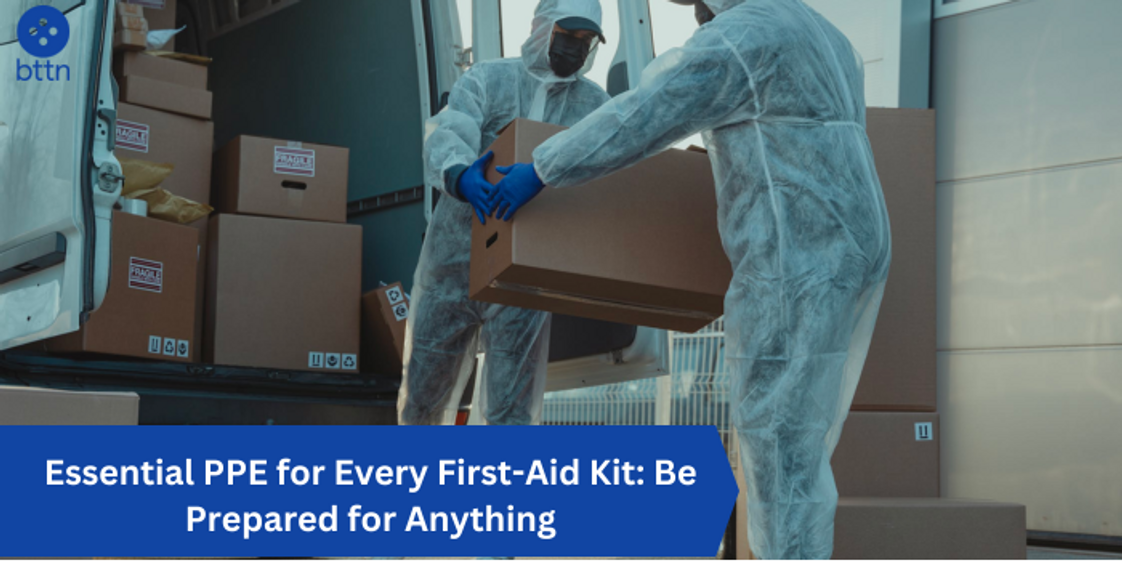
Essential PPE for Every First-Aid Kit: Be Prepared for Anything
Posted by Pankaj Dhiman on Jan 3rd 2024
Emergencies can strike at any time, anywhere. Whether you're at home, on the road, or enjoying the great outdoors, having a well-stocked first-aid kit is crucial for handling minor injuries and unexpected medical situations. But beyond bandages and ointments, Personal Protective Equipment (PPE) plays a vital role in protecting both the injured and the caregiver.
Why is PPE Important in First-Aid?
In the heat of an emergency, adrenaline can take over, making us vulnerable to exposure to bodily fluids, airborne particles, and even contaminated objects. This is where PPE comes in, creating a barrier between the caregiver and potential hazards. By using appropriate PPE, you can:
- Prevent the spread of infections: Bloodborne pathogens like Hepatitis B and C, and HIV, can be transmitted through contact with bodily fluids. PPE like gloves and face shields minimize this risk.
- Protect yourself from airborne contaminants: Dust, smoke, and even small splashes of chemicals can irritate or harm your eyes and respiratory system. Wearing safety glasses and masks safeguards your health.
- Reduce the risk of allergic reactions: Latex gloves or adhesive bandages can trigger allergic reactions in some individuals. Having alternative PPE options readily available ensures everyone can be treated safely.
Must Read: Shop Hydrocolloid Wound Dressings Online at Wholesale Prices
Essential PPE for Your First-Aid Kit
Now, let's explore some essential PPE items you should always have in your first-aid kit:
1. Disposable Gloves:
- Types: Vinyl, nitrile, or non-latex disposable gloves are ideal. Avoid latex if anyone using the kit has allergies.
- Benefits: Protect your hands from blood, bodily fluids, and contaminants.
- Quantity: Pack at least 5-10 pairs in various sizes.
2. Face Shields and Safety Glasses:
- Types: Choose full-face shields for maximum protection or safety glasses for splash protection.
- Benefits: Shield your eyes, nose, and mouth from splashes, sprays, and airborne particles.
- Quantity: Pack at least 1-2 face shields and 2-3 pairs of safety glasses.
3. CPR Shields:
- Types: Choose disposable one-way valve masks or face shields with mouth resuscitators.
- Benefits: Create a barrier between your mouth and the victim's during CPR, reducing the risk of cross-contamination.
- Quantity: Pack at least 1-2 CPR shields.
4. Respiratory Masks:
- Types: Consider N95 masks for filtering airborne particles or surgical masks for basic fluid protection.
- Benefits: Protect your lungs from dust, smoke, and potentially infectious aerosols.
- Quantity: Pack at least 2-3 masks of each type.
5. Other Protective Gear:
- Aprons: Disposable plastic aprons provide additional protection for clothing.
- Shoe covers: Useful in situations with spills or bodily fluids on the ground.
- Hand sanitizer: For quick decontamination when gloves are unavailable.
Must Read: Wound Care: Bandages, Gauze, Medical and Surgical Tape, and Wound Dressings
Additional Tips for PPE Use:
- Proper Donning and Doffing: Learn the correct way to put on and remove PPE to avoid contaminating yourself or others.
- Storage and Maintenance: Store PPE in a clean, dry place and replace expired or damaged items promptly.
- Training and Awareness: Familiarize yourself and anyone who might use the kit with the proper use of PPE.
Remember: Having the right PPE in your first-aid kit is crucial for providing safe and effective first aid in emergencies. By prioritizing your own safety and minimizing the risk of cross-contamination, you can be better prepared to help those in need.
Bonus Tip: Consider attaching a checklist of PPE items to your first-aid kit for a quick reminder during emergencies.
